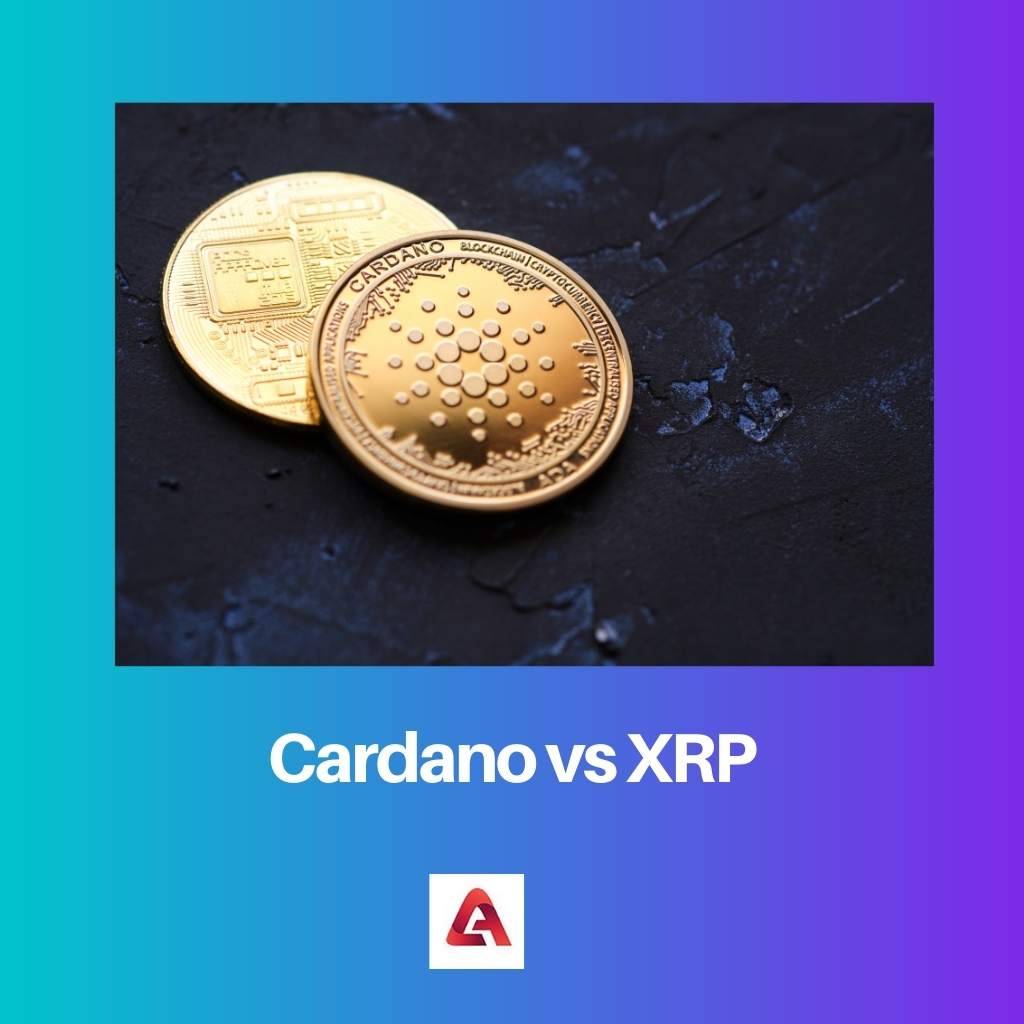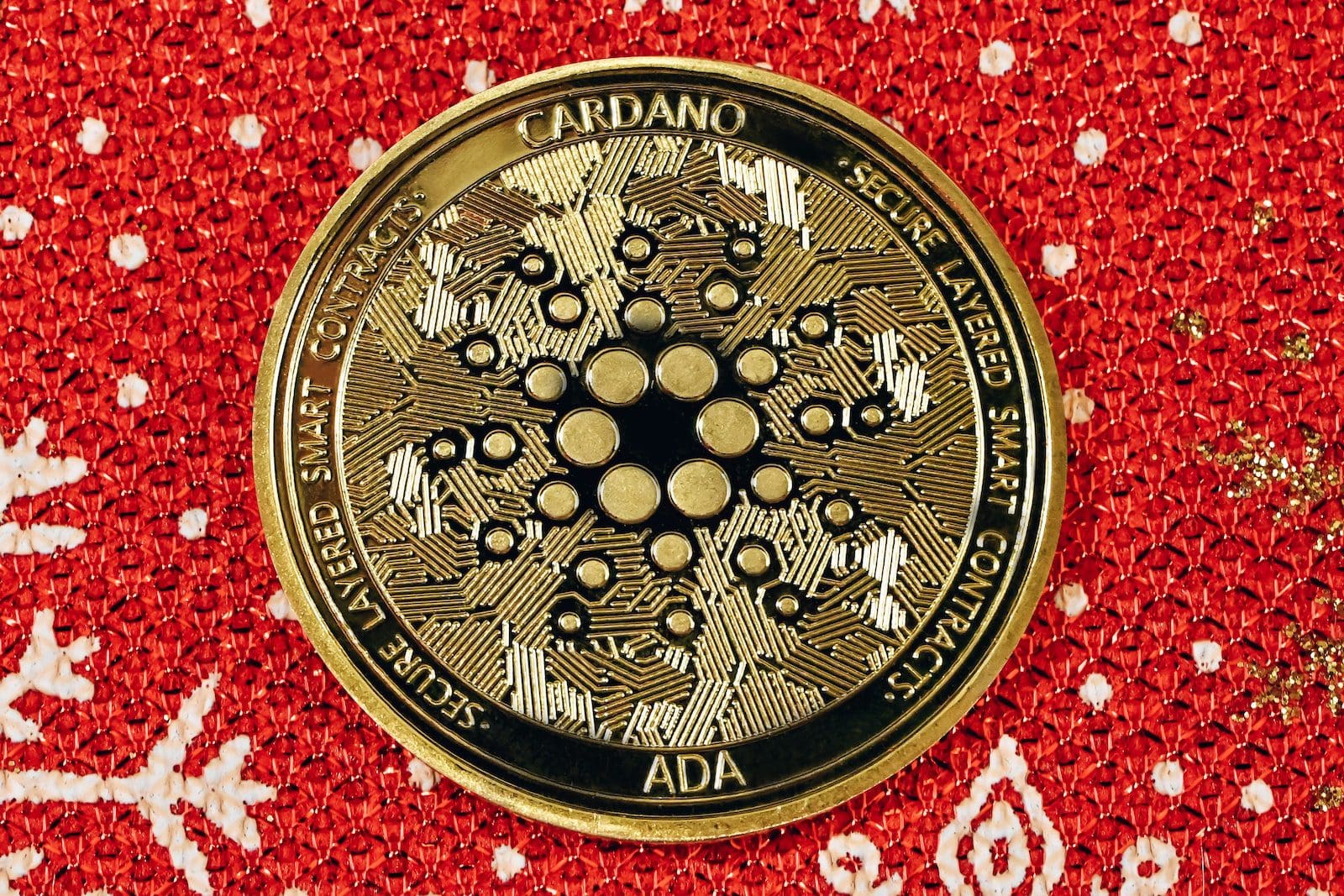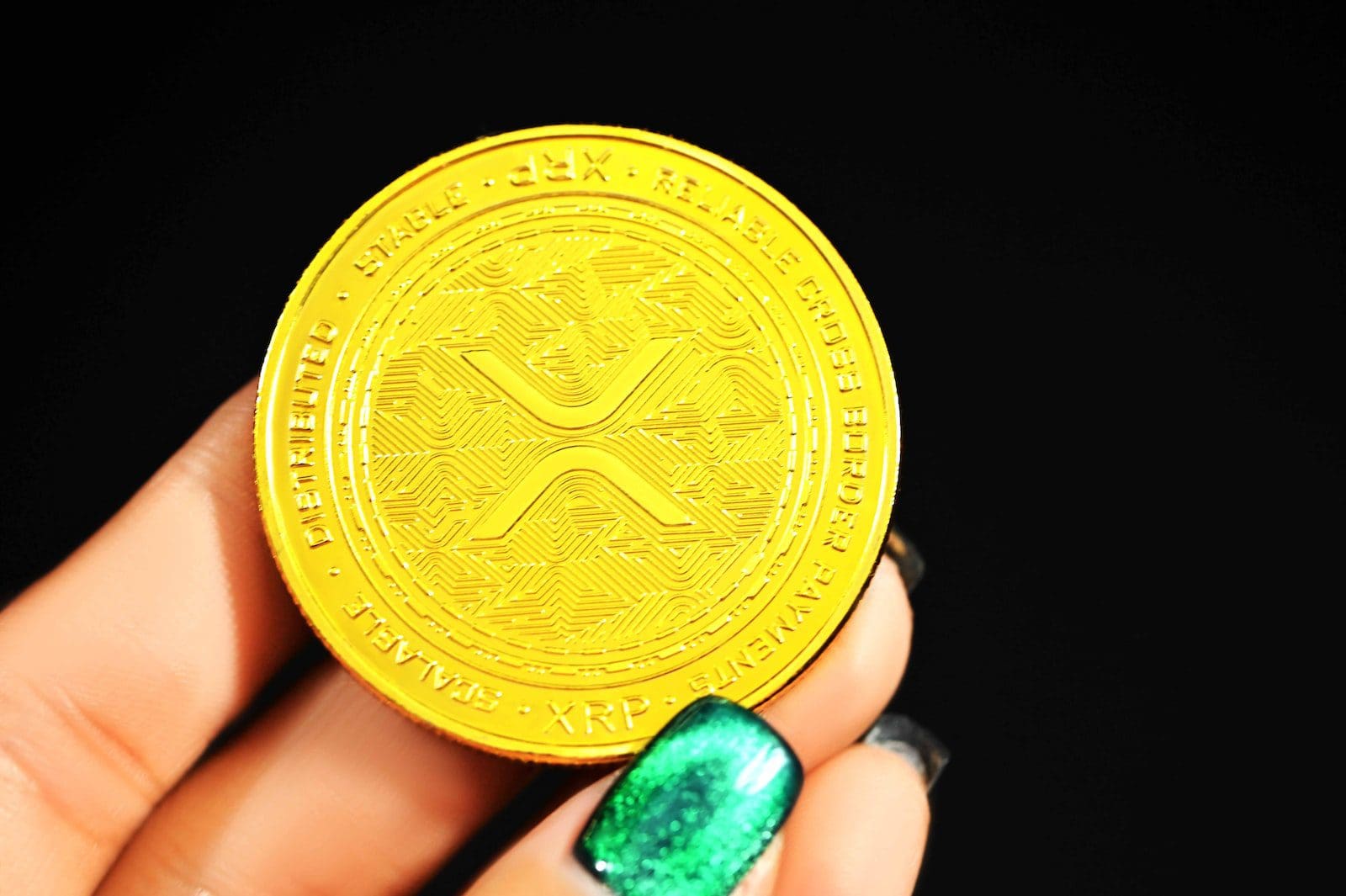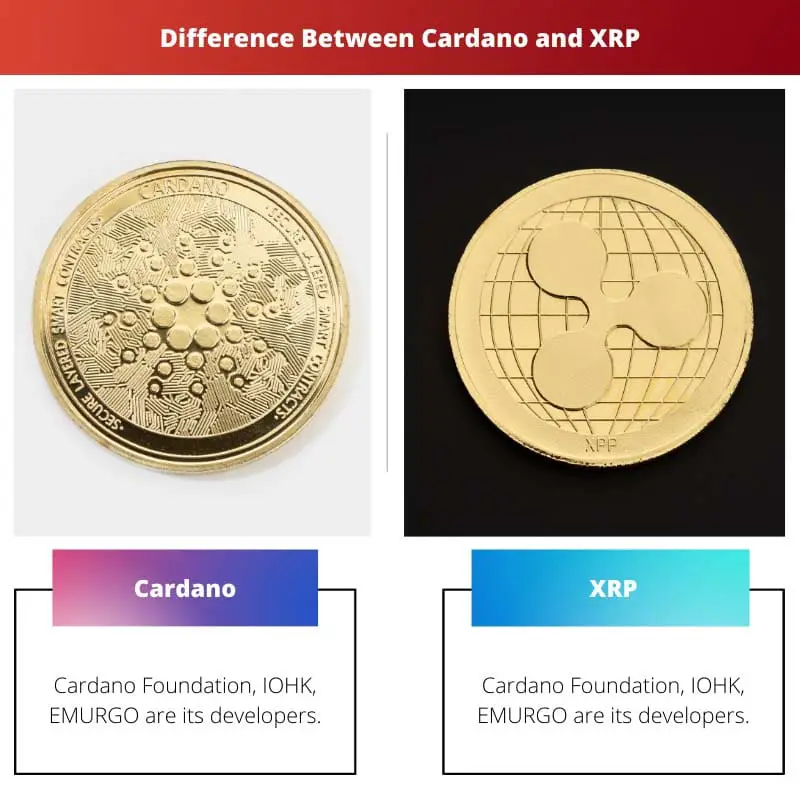Cardano (ADA) and XRP are both blockchain platforms, but they differ in their primary focus. Cardano emphasizes a research-driven approach, aiming for a secure and scalable blockchain through its layered architecture. XRP, developed by Ripple, focuses on facilitating fast and low-cost cross-border payments for financial institutions, using its native digital asset, XRP, as a bridge currency.
Key Takeaways
- Cardano is a platform for creating decentralized applications, while XRP is a digital currency used for transactions.
- Cardano uses a proof-of-stake consensus algorithm, while XRP uses a consensus algorithm called Ripple Protocol Consensus Algorithm (RPCA).
- Cardano has a larger and more active community of developers, while financial institutions more widely adopt XRP.
Cardano vs XRP
Cardano is a blockchain platform for smart contracts, similar to Ethereum, known for its scientific philosophy and peer-reviewed research, focusing on security, scalability, and sustainability. XRP is a digital asset and technology that primarily facilitates fast, low-cost international transactions on the Ripple network.

Cardano as a platform was developed in 2015, but it was launched in 2017 by Charles Hoskinson, also the co-founder of Ethereum. Ethereum, after Bitcoin, is the second-largest cryptocurrency according to market capitalization. It is a public blockchain platform and open source. It can facilitate peer-to-peer transactions. Cardano is run by Cardano Foundation, which is situated in Zug, Switzerland.
XRP is a cryptocurrency of Ripple. Ripple was developed by Ripple Labs Inc. in the United States of America. Ripple was released in the year 2012 by Arthur Britto and David Schwartz. In 2013, the company created its currency with the name XRP. Banks and other Payment platforms began to take an interest in XRP because it transfers money with no fees and minimal wait time.
Comparison Table
| Feature | Cardano (ADA) | XRP (XRP) |
|---|---|---|
| Purpose | Decentralized platform for building and deploying smart contracts and dApps | Facilitating fast and cheap cross-border payments |
| Consensus mechanism | Proof-of-Stake (PoS) | Byzantine Fault Tolerance (Byzantine Generals Problem) |
| Supply | Fixed supply of 45 billion ADA, with a portion initially distributed and the rest minted through staking rewards | Pre-mined total supply of 100 billion XRP, with a large portion held by Ripple |
| Scalability | Layered architecture with separate transaction and computation layers, aiming for high scalability | Focuses on transaction speed and efficiency within the RippleNet network |
| Governance | On-chain voting system for community involvement in protocol updates | Primarily governed by Ripple, with some involvement from collaborating institutions |
| Use cases | Smart contracts, decentralized finance (DeFi), non-fungible tokens (NFTs), identity management | Cross-border payments, liquidity solutions, remittance services |
| Investment potential | Seen as a long-term play on the potential of blockchain technology and dApps | Seen as a potential solution for improving efficiency and reducing costs in the global payments system |
| Regulation | Uncertain regulatory landscape for cryptocurrencies and dApps | May face regulatory scrutiny due to its association with Ripple and its centralized aspects |
What is Cardano?
Cardano is a blockchain platform that aims to provide a secure and scalable infrastructure for the development of decentralized applications (DApps) and smart contracts. Launched in 2017 by Ethereum co-founder Charles Hoskinson and his company IOHK (Input Output Hong Kong), Cardano distinguishes itself through a research-driven and academically rigorous approach.
Philosophy and Research-Driven Development
Cardano places a strong emphasis on scientific principles and formal methods in its development process. The platform aims to achieve a balance between the needs of users, regulators, and the broader blockchain community by incorporating peer-reviewed academic research into its design. This commitment to research is intended to ensure the security, sustainability, and scalability of the Cardano network.
Layered Architecture
Cardano features a layered architecture consisting of two main layers: the Cardano Settlement Layer (CSL) and the Cardano Computation Layer (CCL). The CSL is responsible for handling the settlement of transactions, while the CCL focuses on executing smart contracts and running decentralized applications. This separation allows for greater flexibility, scalability, and upgradability.
Proof-of-Stake Consensus Mechanism
Cardano uses a proof-of-stake (PoS) consensus mechanism known as Ouroboros. PoS enables Cardano to achieve energy efficiency by eliminating the need for resource-intensive mining. Ouroboros divides time into epochs and uses a stake-weighted election process to select slot leaders who validate transactions and create new blocks. This consensus algorithm is designed to be secure, scalable, and resistant to various attack vectors.
Native Cryptocurrency: ADA
ADA is the native cryptocurrency of the Cardano platform. It serves multiple functions, including transaction fees, staking, and participating in the governance of the Cardano network. ADA holders can stake their coins to help secure the network and earn rewards.
Ongoing Development and Future Plans
Cardano is continuously evolving, with a roadmap that includes multiple phases such as Byron, Shelley, Goguen, Basho, and Voltaire. Each phase introduces new features and improvements, with Goguen focusing on smart contract capabilities, Basho on scalability, and Voltaire on governance. The development team aims to make Cardano a comprehensive and sustainable blockchain ecosystem.

What is XRP?
XRP is a digital currency that operates on the Ripple blockchain protocol. Ripple, the company behind XRP, aims to facilitate fast and cost-effective cross-border payments by providing a decentralized network for financial transactions.
Key Features
1. Fast Transactions
XRP transactions are known for their speed, settling in a few seconds. This swift processing time makes XRP an attractive option for cross-border payments compared to traditional banking systems.
2. Bridge Currency
XRP serves as a bridge currency in the Ripple network. It can be used to facilitate transactions between different fiat currencies, acting as a mediator to enable seamless fund transfers across borders.
3. Consensus Algorithm
Ripple uses a unique consensus algorithm known as the Ripple Protocol Consensus Algorithm (RPCA). Unlike proof-of-work used by some other cryptocurrencies, RPCA does not require extensive computational resources, contributing to the energy efficiency of the XRP network.
4. RippleNet
RippleNet is the network of financial institutions, banks, and payment service providers that utilize XRP for cross-border transactions. Ripple aims to streamline and enhance the efficiency of global payments through the adoption of RippleNet.
Use Cases
a. Cross-Border Payments
XRP’s primary use case is facilitating cross-border payments. Its speed and low transaction costs make it an attractive option for financial institutions seeking to improve the efficiency of international money transfers.
b. Liquidity Provider
XRP’s role as a bridge currency makes it a liquidity provider in the Ripple network. It enables the seamless exchange of value between different currencies without the need for multiple direct currency pairs.
Challenges and Controversies
Despite its advantages, XRP has faced regulatory challenges, particularly from the U.S. Securities and Exchange Commission (SEC), which filed a lawsuit against Ripple Labs in late 2020, alleging the illegal sale of unregistered securities. The outcome of this legal battle may significantly impact the future of XRP and its adoption.

Main Differences Between Cardano and XRP
- Primary Focus:
- Cardano (ADA): Emphasizes a research-driven approach, focusing on scalability, sustainability, and security in blockchain technology.
- XRP (XRP): Designed by Ripple to streamline cross-border payments, providing a fast and cost-effective solution for financial institutions.
- Use Case:
- Cardano (ADA): Aims to offer a platform for the development of decentralized applications (DApps) and smart contracts.
- XRP (XRP): Primarily serves as a bridge currency for facilitating cross-border transactions, targeting the improvement of global payment systems.
- Consensus Mechanism:
- Cardano (ADA): Utilizes the Ouroboros Proof-of-Stake (PoS) consensus algorithm, focusing on energy efficiency and scalability.
- XRP (XRP): Implements the Ripple Protocol Consensus Algorithm (RPCA), a unique consensus mechanism that does not rely on mining, contributing to its energy efficiency.
- Network Architecture:
- Cardano (ADA): Features a layered architecture, separating the settlement and computation layers to enhance security and flexibility.
- XRP (XRP): Operates on the Ripple network, utilizing a decentralized network of validators to achieve consensus and validate transactions.
- Target Audience:
- Cardano (ADA): Aims to serve a wide range of users, including developers, enterprises, and individuals, providing a platform for decentralized applications and smart contracts.
- XRP (XRP): Targets financial institutions and banks as its primary users, aiming to optimize cross-border payments and enhance the efficiency of global financial transactions.
- Regulatory Landscape:
- Cardano (ADA): Has navigated regulatory environments with a focus on compliance and collaboration with regulatory bodies.
- XRP (XRP): Faced regulatory challenges, particularly from the U.S. Securities and Exchange Commission (SEC), leading to legal proceedings and uncertainties about its regulatory status.





